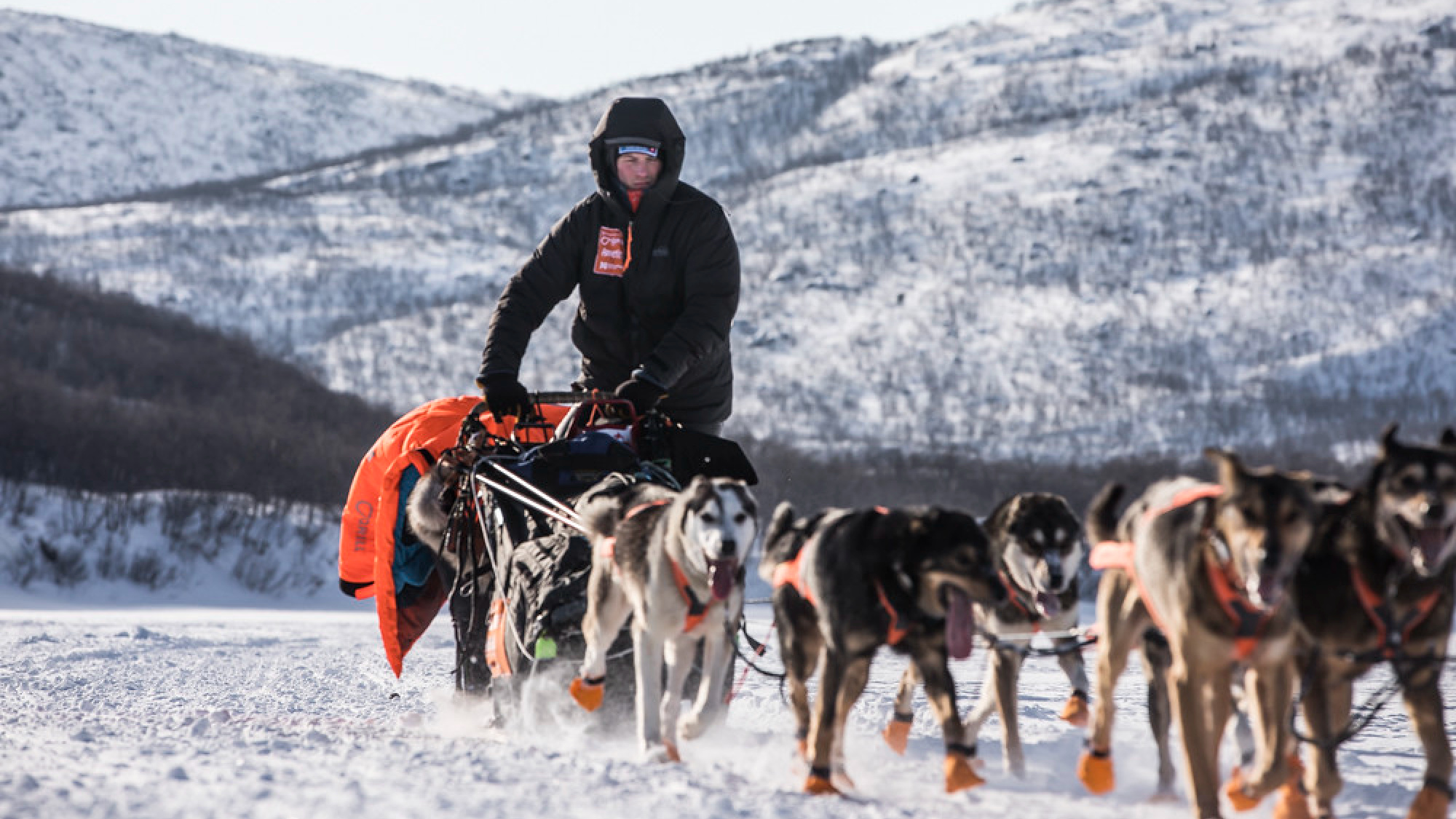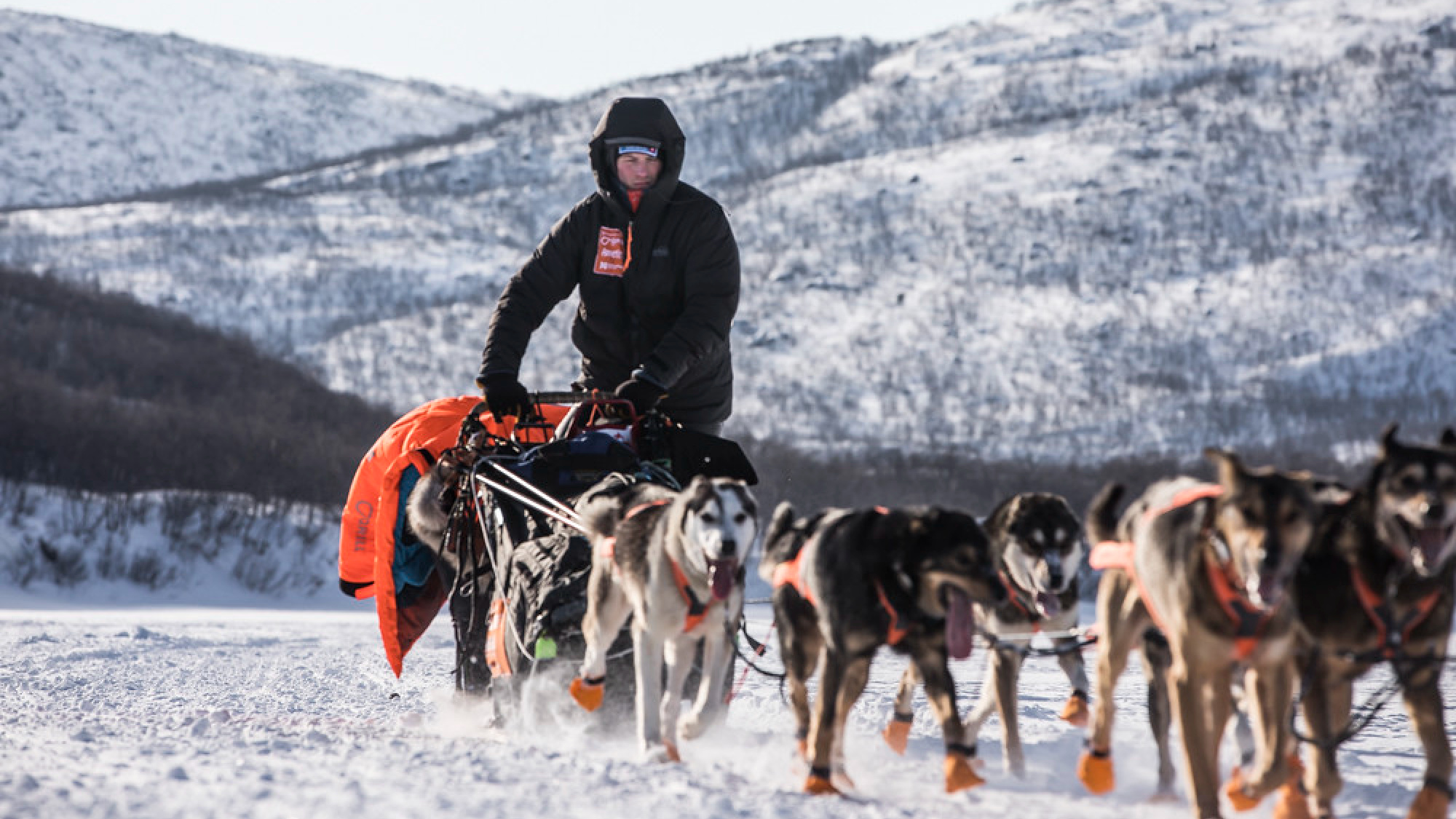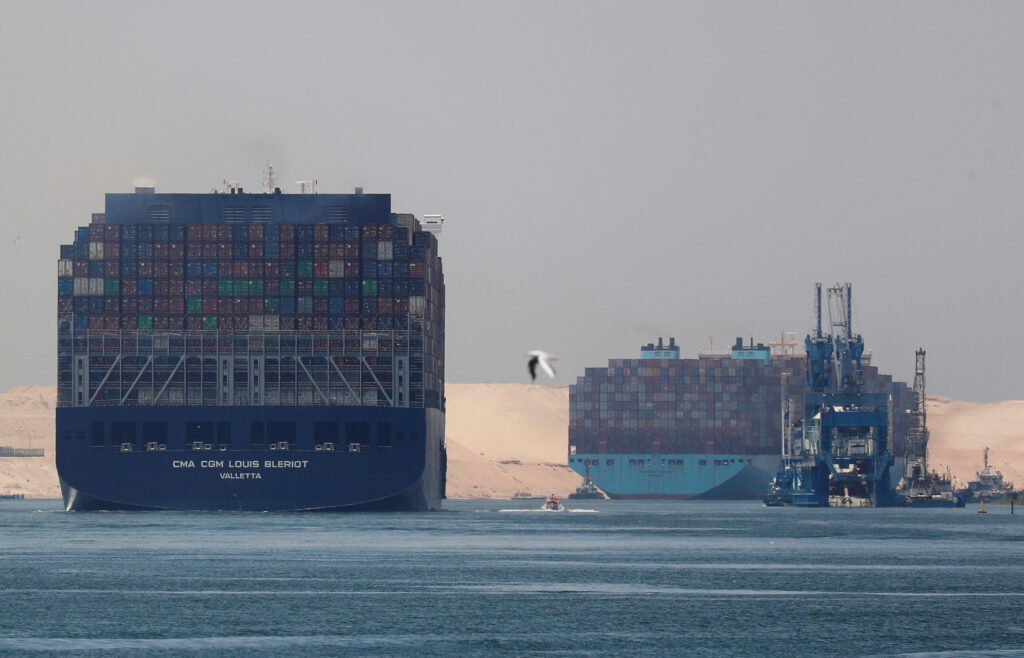After a moose became entangled with his sled-dog team, Dallas Seavey had to shoot it and, per race rules, field dress it

This is Seavey’s 14th year competing in the Iditarod race. Photograph by Steinar Vik
Disaster struck Iditarod musher Dallas Seavey and his team of sled dogs at 1:43 a.m. on Monday when they encountered a moose that reportedly became entangled in the dogtrain, gravely injuring one dog. Without other options to save his dogs, Seavey, a five-time Iditarod winner, dispatched the moose with a handgun.
The injured dog, a female named Faloo, underwent emergency surgery and remained in critical condition at the time of publication, according to a post on Seavey’s Instagram profile.
Seavey tried gutting the dead moose and clearing it out of the way, since it was lying in the middle of the trail and posed a risk to other racers. He encouraged officials to clear the remaining obstacles in a later interview. It is unclear what sex or age the moose was.
“It fell on my sled, it was sprawled on the trail,” Seavey said, according to the Associated Press. “I gutted it the best I could, but it was ugly.”
Seavey and his team were 14 miles past the Skwentna checkpoint at the time of the run-in, a press release from the Iditarod Trail Committee says. (The team was just 97 miles into the race overall, with around 10 percent of the course behind them.) After resting and feeding his dogs, Seavey left the scene and carried on to the Finger Lakes checkpoint, where he left the injured dog with race officials to be flown to Anchorage for emergency evaluation. Race marshal Warren Palfrey notified Alaska State Troopers of the incident.
“With help from snowmobile-aided support in the area, we are making sure that every attempt is made to utilize and salvage the moose meat,” Palfrey says. This effort is in compliance with race rules that meat from any big game animal killed on the trail out of self defense must be donated. Rule 34 also states that ensuing mushers must help with the gutting effort if possible, and no other mushers can move beyond the kill site until the musher who killed the animal has proceeded.
“Iditarod officials swiftly organized assistance to handle the aftermath, contacting the authorities and confirming the preservation of the animals meat,” a different post on Seavey’s Instagram reads. “Upon reaching Finger Lake, Dallas focused on the welfare of his dogs, confirmed that all was okay, but unfortunately needing to drop a dog named Faloo. Despite the challenges, Dallas remained pragmatic, acknowledging the complexities of the situation and suggesting they send someone promptly to get the animal off the trail.”
Moose encounters are common for Iditarod mushers, both during the race and while training for it. Last February during a 52-mile training run, musher Bridgett Watkins had a grisly, drawn-out encounter with a bull moose that nearly killed several of her dogs. In 1985, musher Susan Butcher tried to ward off a moose with an axe and her parka during the race, but not before the moose killed two of her dogs and injured 13 more. (Another musher in the race eventually killed the moose.)
Read Next: “He Was Charging Full Speed Right at Me.” The Alaskan Musher Attacked by a Moose Shares Her Story
For context, mushers can only run a team of up to 14 dogs (the maximum was 16 before a 2019 rule change) and must cross the finish line with five dogs hooked up to the “towline.” Any dogs not on the line must be hauled in the sled.
The 52nd Iditarod kicked off Sunday in Willow, some 70 miles north of Anchorage. Race teams follow the “North Course” on even years and the “South Course” on odd years. Both courses cover roughly 1,000 miles across Alaska and end in Nome. This year’s field has 38 mushers, many of them seasoned veterans. This is Seavey’s 14th Iditarod, and he’s currently tied for the most wins ever with Rick Swenson. Monday was his 37th birthday.
Read the full article here




